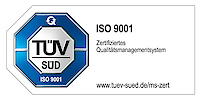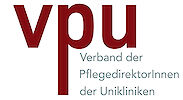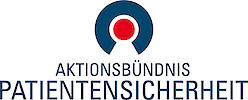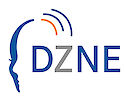Projects
Periodontitis is a complex multifactorial inflammatory disease, which is characterized by the destruction of tooth-supporting tissues. Periodontitis not only reduces the quality of life and increases the risk of systemic diseases but also poses an enormous problem as regards health economics. However, the exact aetiopathogenetic mechanisms for periodontitis are still largely unknown. Therefore, the major goal of the Clinical Research Unit (CRU) 208 “Aetiology and Sequelae of Periodontal Diseases - Genetic, Cell Biological and Biomechanical Aspects” was to improve the prevention, disease control and therapy of periodontal diseases and to minimize health risks for the entire organism through a better understanding of the aetiopathogenetic and regenerative processes. The CRU 208 was an interdisciplinary and multicenter research unit funded by the German Research Foundation and the Medical Faculty of the Universtity of Bonn. The scientists of the Clinical Research Unit were from the Dept. of Periodontology, Operative and Preventive Dentistry, the Dept. of Orthodontics, the Dept. of Oral and Maxillofacial Plastic Surgery, the Section of Oral Technology, the Dept. of Dermatology and Allergy, and the Dept. of Internal Medicine II, Cardiology, Pneumology, and Angiology (all from University of Bonn), the Institute for Clinical Molecular Biology and the 1st Dept. of General Internal Medicine of the University Hospital Schleswig-Holstein (University of Kiel), and the Institute of Computational Science (University of Lugano).
During the first funding period, the nine projects examined the immunoinflammatory processes in periodontal tissues, the regulation of the inflammatory and tissue-destructive processes by various intrinsic and extrinsic factors, the mechanisms how local periodontal inflammation and destructive processes cause systematic vascular damage and how an improvement of the vascular regeneration processes affects periodontal diseases and, finally, how the regeneration of lost periodontal structures is initiated or supported by growth and differentiation factors. The great efforts and strides by the CRU 208 were evidenced by the significant number of publications, awards and presentations at international conferences. Furthermore, the design principle of a cell strain device was successfully applied for national and international patents. Close collaborations among the projects of the CRU 208 as well as fruitful intra- and extramural collaborations were successfully established, strengthened or expanded. In order to support the exchange of scientific knowledge and expertise, an international symposia, six workshops and monthly seminars were organized. Moreover, the research structure at the Center of Dento-Maxillo-Facial Dentstry in terms of personnel, equipment and available space was considerably improved. It was a strong concern of the CRU 208 to involve the younger generation of researchers with a doctoral and postdoctoral qualification as well as students into the projects. Therefore, one project was entirely dedicated to this purpose.
In the second funding period, the CRU 208 further explored the innate and adaptive immune responses to bacterial infections (Aim #1). These projects helped further identify immunological mechanisms critical not only for the initiation, but also for the chronic manifestation as well as the induction of autoimmunity in periodontitis. Furthermore, they will serve to obtain a rational basis for specific therapeutic interventions. Although periodontopathogenic microorganisms represent a necessary prerequisite for the initiation and progression of periodontitis, additional factors, such as genetic factors and systemic diseases, contribute to the development of periodontitis. On the other side, the infectious and inflammatory burden of periodontitis has also an important systemic impact. The CRU 208 therefore focused on the underlying mechanisms for the association of periodontitis with systemic diseases and conditions, such as cardiovascular diseases, obesity, neoplasia, age and oxidative stress (Aim #2). These projects contributed to a better understanding of the interactions of systemic diseases and factors with periodontal homeostasis, destruction and regeneration. Moreover, the projects also guided the development of prognostic and diagnostic markers and paved the way for future therapeutic applications. Another focus (Aim #3) of the CRU 208 was the development of mathematical models and efficient algorithms to simulate the loading conditions of the periodontium and the subsequent experimental and clinical validation. These studies allowed to better predict the course of periodontitis with respect to the biomechanical function of the tooth and periodontium. We expected that the findings of the proposed projects of CRU 208 will have a decisive influence on the prevention, diagnostics and therapy of periodontal diseases and may also help minimize health risks for the entire organism. In addition, the integration of dental medicine into the research focus areas of the Medical faculty of Bonn was further strengthened.
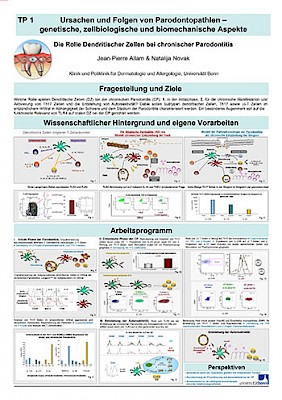 Investigators
Investigators
PD Dr. med. Jean-Pierre Allam
Department of Dermatology and Allergy
Medical Faculty
University of Bonn
Prof. Dr. med. Natalija Novak
Department of Dermatology and Allergy
Medical Faculty
University of Bonn
First Funding Period
Role of distinct oral mucosal dendritic cell subsets in the pathophysiology of chronic periodontitis
Summary
Chronic periodontitis (CP) is an inflammatory condition of the periodontium, which affects over 70% of the adult population and represents the major cause for tooth loss. Since only little is known about its pathophysiology, to date therapy of CP is restricted to unspecific interventions such as improvement of oral hygiene, topical application of antimicrobial substances, or systemic administration of antibiotics. Hence, elucidating the underlying immunological mechanisms leading to the initiation and chronic manifestation of CP might give rise to new and more specific therapeutic strategies. Without any doubt, antigen-presenting cells (APC) such as dendritic cells (DCs) are involved in the pathogenesis of CP and different immunological mechanisms contribute to the initial and chronic phase of CP. While Porphyromonas gingivalis (PG) as a major pathogen in CP is most likely involved in the initial phase of the disease there is convincing evidence that during chronic manifestation, a subgroup of CP is associated with auto-antibodies to gingival antigens suggesting an underlying autoimmune reaction.
The short-time aim is to identify immunological mechanisms critical not only for the initiation but also for the chronic manifestation as well as the induction of autoimmunity in CP. The long-time aim is to elucidate critical steps in the pathophysiology of CP, which might be targeted by specific therapeutic interventions leading to the prevention of chronification and autoimmune induction. Moreover, in view of treatments using the oral route as an application site such as sublingual immunotherapy (SLIT) or other oral vaccines, knowledge about immune mechanisms leading to induction of TH17 and autoimmunity within the oral mucosa might impact on the development of new vaccination strategies or selection of adjuvants.
Second Funding Period
Role of macrophages/dendritic cells and NKT cell interaction in Th17 polarized chronic periodontitis
Summary
Chronic periodontitis (CP) is an inflammatory condition of the periodontium. However, little is known about its pathophysiology. Obviously, antigen-presenting cells (APCs) like dendritic cells (DCs) or macrophages (Mo) are involved. In this context, we could demonstrate that in CP TLR4-positve Mo-like cells expressing Mo and DCs markers predominate. We could also detect in CP (i) a strong Th17 infiltrate (ii) that Mo-like cells produce Th17 propagating IL-23 and (iii) that in vitro generated Mo-like cells produce IL-23 upon TLR4 activation by CP-associated Porphyromonas gingivalis-LPS. Recent studies could detect Natural Killer T cells (NKTs) in CP but to date little is known about their inflammatory or regulatory role. Thus, we intend to characterize in CP (i) DC/Mo-like cells regarding structures for antigen recognition by NKTs (ii) phenotype of NKTs and their ability to produce IL-17 and (iii) their interaction with DC/Mo-like cells. Furthermore, we plan to analyze the involvement of NKTs in CP regarding TLR4 activation on APCs using an in vitro model. Following beneficial therapeutic use of topical calcineurin inhibitors (TCI) in atopic dermatitis we intend to investigate the impact of TCI on APCs and T cells involved in CP. The short-time aim is to further identify immunological mechanisms in CP. The long-time aim is to obtain a rational basis for specific therapeutic interventions using TCI.
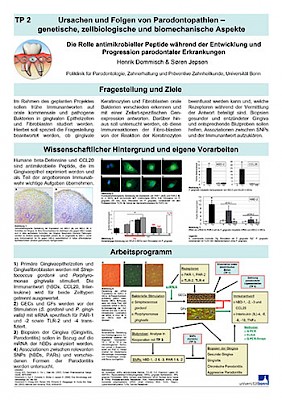 Investigators
Investigators
Prof. Dr. Henrik Dommisch
Department of Periodontology, Operative and Preventive Dentistry
Center of Dento- Maxillo- Facial Medicine
Medical Faculty
University of Bonn
Prof. Dr. Dr. Søren Jepsen, M.S.
Department of Periodontology, Operative and Preventive Dentistry
Center of Dento- Maxillo- Facial Medicine
Medical Faculty
University of Bonn
First Funding Period
The role of antimicrobial peptides during development and progression of periodontal diseases
Summary
Within the oral cavity multiple bacterial species interact with epithelia, yet the oral cavity maintains healthy homeostasis. Antimicrobial peptides such as human beta-defensins (hBDs) are mainly responsible for maintaining oral health by providing a strong chemical barrier and thereby fight pathogenic bacteria. The hypothesis to be tested in this proposal is that gingival keratinocytes and gingival fibroblasts recognize oral bacteria differently and respond by cell specific gene expression patterns. This work will focus on distinctive genes involved in innate immune responses such as hBDs and C-C-chemokine-20, but also inflammatory mediators such as Interleukin-4, -6, -8, and -10. After exposure to oral bacteria (Streptococcus gordonii and Porphyromonas gingivalis), the gene expression will be analyzed by real-time PCR technology. This proposal will also investigate differential regulations of immune responses by specific cell surface receptors, such as pattern recognition receptors (Toll-like receptors, TLR-2 and TLR-4) and protease-activated receptors (PAR-1 and PAR-2), by utilizing RNA interference (RNAi) technology. Identifying differences in cell responses and communication may help to understand how gingival inflammation and especially periodontitis develops.
Second Funding Period
Antimicrobial peptides in gingival inflammation and periodontal healing
Summary
The evaluation of responses of gingival epithelial cells (GECs) and fibroblasts (HGFs) to the commensal Streptococcus gordonii and the pathogenic Porphyromonas gingivalis revealed that the commensal modified the antimicrobial host responses to the pathogen. We formulated a research agenda to further analyze gingival responses to oral bacteria in vitro and in vivo. (1) In GECs and HGFs, we aim to evaluate the antimicrobial response to various bacterial virulence factors, such as lipopolysaccharides, proteases etc.. Here, we propose that specific combinations of virulence factors are required to individually initiate antimicrobial peptide (AMPs) expression. (2) In addition, in vivo expression of AMPs will be investigated during early gingival inflammation. For this purpose, we aim to perform an experimental gingivitis study, a non-invasive human model of acute inflammation and its resolution. (3) Moreover, we aim to elucidate the expression profile of AMPs during periodontal healing in patients with advanced chronic periodontitis that undergo periodontal therapy. In both in vivo projects, the individual microbiological composition of the biofilm will be longitudinally analyzed. In the future, improved knowledge about the regulation of AMPs during host-bacteria-interactions is a pre-requisite for novel antimicrobial prevention and treatment strategies, involving AMPs.
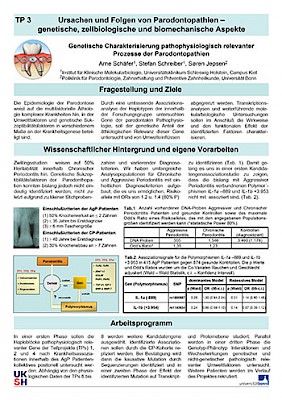 Investigators
Investigators
PD Dr. rer. nat. Arne Schäfer
Institute of Clinical Molecular Biology and 1st Department of Internal Medicine
University Hospital Schleswig-Holstein
Prof. Dr. Dr. Søren Jepsen, M.S.
Department of Periodontology, Operative and Preventive Dentistry
Center of Dento- Maxillo- Facial Medicine
Medical Faculty
University of Bonn
Prof. Dr. Stefan Schreiber
Institute of Clinical Molecular Biology and 1st Department of Internal Medicine
University Hospital Schleswig-Holstein
First Funding Period
Genetic Investigation of Pathophysiological Relevant Processes in Periodontitis
Summary
The epidemiology of periodontitis is consistent with the multifactorial aetiology of complex diseases in which for the majority of cases the disease development depends on the collective presence of environmental risk factors (e.g. smoking, oral hygiene, etc.) in conjunction with various genetic risk factors. Here, we propose a strategy in which the detailed knowledge of disease pathophysiology in periodontitis within the research group will be used to guide a comprehensive genetic exploration of the etiological relevance of these genes. We will cover key disease genes in pathophysiology by a haplotype tagging approach using the SNPlex? and TaqMan? technology (Hampe et.al., 2001).
We will investigate Aggressive Periodontitis (AgP) as an extreme phenotype in which we expect a higher degree of genetic contribution due to its early onset and rapid development. The phenotype definition requires diagnosis before the age of 35 and a rapid bone loss and subsequent tooth loss documented by X-ray radiographs. The AgP subform of periodontitis is a comparatively rare disease with a prevalence of 0.1% - 0.2% (Hansen B.F. et al., 1984; Kronauer et al., 1986; Sacby M., 1984). In addition, we employ a well defined clinical exploration sample of Chronic Periodontitis (CP), the less severe but most common type, for further exploration and verification of eventual association findings in AgP.
Second Funding Period
Functional characterization of the long antisense noncoding RNA CDKN2BAS (ANRIL) and elucidation of the specific role in the pathophysiology of periodontitis
Summary
Genetic exploration of potential key disease genes of periodontitis allowed us the identification of the first shared genetic risk gene of periodontitis and coronary heart disease (CHD), termed ANRIL (CDKN2BAS). The biological function of ANRIL is currently largely unknown. In previous works we identified different regulation of alternatively spliced ANRIL transcripts in gingival fibroblasts upon stimulation with pathogenic bacteria in relation to the specific genetic background. These transcripts may have distinct physiological and tissue specific functions, and changes in the splicing patterns potentially have pathological relevant effects. We will address the following questions: (1) Minute elucidation of differently regulated splicing variants of ANRIL within gingival fibroblasts (hGF) and arterial endothelial cells. (2) Identification of the nuclear localisation of the two main ANRIL transcripts by FISH. (3) Identification of putative protein binding partners of the major tissue specific ANRIL transcripts. (4) Genome-wide expression profiling upon inducible over-expression and knockdown of ANRIL in gingival fibroblastic cells of homozygous background for the disease associated as well as the common alleles to elucidate the transcriptional regulatory effects of ANRIL on a genome-wide level. (5) Targeted re-sequencing of the genomic region of ANRIL in patients who are homozygous for the two main associated haplotype blocks to identify the functional genetic variants. We will subsequently test these variants for their etiological relevance in CHD.
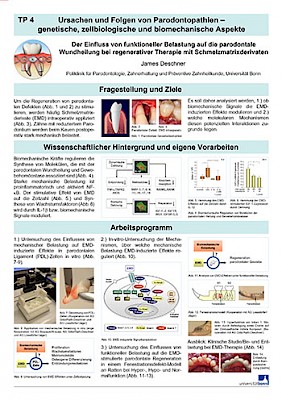 Investigator
Investigator
Prof. Dr. med. dent. James Deschner
Experimental Dento-Maxillo-Facial Medicine
Center of Dento-Maxillo-Facial Medicine
Medical Faculty
University of Bonn
First Funding Period
The effect of functional loading on periodontal wound healing in regenerative therapy with enamel matrix derivatives
Summary
Periodontitis is a multicausal inflammatory disease associated with loss of periodontal attachment, collagen, and alveolar bone. The regeneration of lost periodontal structures can be supported by the application of enamel matrix derivatives (EMD) as well as growth and differentiation factors. Recent studies on cartilage explants and tissue engineered constructs have reveiled that growth factors act in concert with biomechanical signals that can both enhance and inhibit the anabolic effects of biological mediators.So far, the effect of mechanical loading on periodontal wound healing events in modern regenerative treatment approaches has been very much neglected. Since the periodontium comprises load-bearing tissues, the study of potential interactions between bioactive factors and biomechanical signals is critical to optimize periodontal wound healing. This study therefore proposes to examine interactions of mechanical signals with the effects of EMD by application of mechanical load to EMD-treated periodontal ligament cells in vitro and by generation of different loading conditions in an in vivo experimental periodontal wound model. Furthermore, the mechanisms underlying the potential interactions between biological and mechanical factors will be analyzed at cellular and molecular level.
Second Funding Period
The effect of adipokines and obesity on periodontal destruction and regeneration
Summary
Strong evidence has accumulated that periodontitis is associated with obesity. In obese patients, serum levels of a number of adipokines, which are cytokines derived from adipose tissue, are altered. Adipokines regulate food intake and energy expenditure, but also inflammatory and wound healing processes. Periodontal regenerative healing can be induced by enamel matrix derivative (EMD) and bone morphogenetic protein 2 (BMP2). Whether adipokines interfere with the actions of EMD or BMP2 is as yet unknown. We propose to study the effects of adipokines and obesity on periodontal destruction and regeneration in vitro and in vivo. Specifically, we aim to examine: (i) the regulation of adipokines in human periodontal ligament (PDL) cells in response to inflammatory, hypoxic, biomechanical and regenerative signals in vitro; (ii) if and to what extent adipokines modulate PDL cell functions in the presence and absence of EMD or BMP2; and (iii) the intracellular signaling pathways underlying the potential interactions of adipokines with EMD and BMP2, respectively. Additionally, we will extend in vitro findings by examining the effects of obesity on periodontal regeneration in an animal model. These experiments will help clarify the role of adipokines and obesity in periodontal destruction and regeneration.
KFO 208-related Publications
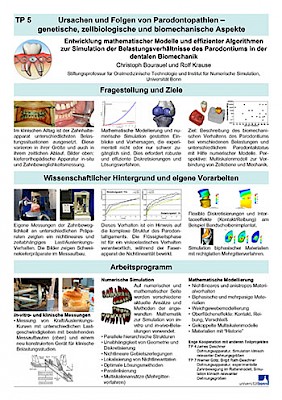 Investigators
Investigators
Prof. Dr. Christoph Bourauel
Oral Technology (OT)
Center of Dento-Maxillo-Facial Medicine
Medical Faculty
University of Bonn
Prof. Dr. Rolf Krause
Institute for Numerical Simulation (INS)
Faculty of Mathematics and Natural Science
Institute of Computational Science
Faculty of Informatics
Università della Svizzera Italiana
First Funding Period
Development of Mathematical Models and Efficient Algorithms to Simulate the Loading Conditions of the Periodontium in Dental Biomechanic
Summary
The biomechanical behaviour of the periodontal ligament (PDL) is of crucial relevance for the transfer of the mechanical loading to the anatomical structures surrounding the teeth, i.e. alveolar bone, PDL and the mucosa covering the alveolar bone. Due to the complex structure of the PDL, a highly non-linear, anisotropic and time-dependent behaviour is to be assumed. Until now, a closed mathematical description of the biomechanical response of the tooth supporting system, covering the full range of short to long-term loading (chewing, clenching, orthodontic force system) could not be presented. It is the aim of the current proposal to 1.) develop a closed mathematical representation of the multiphase, time-dependent constitutive law of the PDL, 2.) develop robust and efficient discretisation techniques and parallel solution methods for the arising non-linear systems, 3.) apply these methods for biomechanical models of teeth and tooth supporting structures, and 4.) validate the developed models using experimental biomechanical results and clinical studies. Mathematical modelling and their efficient implementation on a parallel cluster-server will be carried out at the Institute for Numerical Simulation. Experimental and clinical work will be carried out at the Endowed Chair of Oral Technology in collaboration with the clinical departments of the Dental School.
Second Funding Period
Development of mathematical models and efficient algorithms to simulate the loading conditions of the periodontium in dental biomechanics: clinical and experimental validation
Summary
In the first project phase of this subproject #5, newly developed in-vivo- and in-vitro-experimental devices have been constructed and new developments for the mathematical modeling and the numerical simulation of the periodontal ligament (PDL) have been performed. One of the central results of this first period is that a complete measurement - modeling - simulation - validation chain has been established as feedback loop. Particular focus was placed on the time-dependant behavior and the impact of varying health status of the periodontium. First in-vitro-tests together with ongoing in-vitro- and in-vivo-studies and simulations revealed an extreme influence of the loading velocity on the force/deflection characteristics, as reported earlier by several authors. However, accuracy and velocity range could be extended significantly. The main focus of the second project phase will be the clinical application of the developed methods and devices and further refinement of the developed mathematical und numerical models on the basis of the data acquired by in-vitro- and in-vivo-measurements. Tooth mobilities of patients will be measured with different periodontal status using the intraoral measurement device. The clinical work groups of the subprojects #2, #4, #7 and #8 will be asked for support in the clinical study phase.
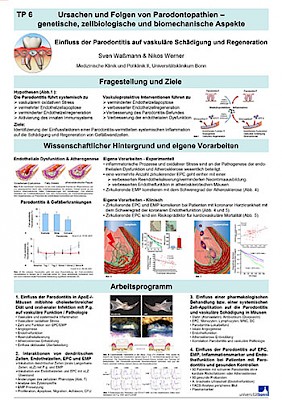 Investigators
Investigators
PD Dr. med. Nikos Werner
Department of Internal Medicine II, Cardiology, Pneumology, and Angiology
Medical Faculty
University of Bonn
PD Dr. med. dent. Moritz Kebschull
Department of Periodontology, Operative and Preventive Dentistry
Medical Faculty
University of Bonn
First Funding Period
Impact of periodontitis on vascular damage and regeneration
Summary
Besides local inflammation, periodontitis is also associated with systemic inflammatory reactions. Inflammatory processes play an important role in the pathogenesis of atherosclerosis. Besides inflammatory processes, increased endothelial cell apoptosis and diminished endothelial cell regeneration by endothelial progenitor cells (EPCs) are thought to be relevant for the pathogenesis of endothelial dysfunction, an early and crucial stage of atherogenesis associated with an adverse prognosis, and atherosclerosis. Recent clinical and epidemiological investigations demonstrated that severe periodontitis causes endothelial dysfunction and may be associated with coronary artery disease and an increased cardiovascular event rate. The molecular and cellular mechanisms are incompletely understood at present. The relevance of endothelial cell apoptosis and EPCs in this context is unknown. The aim of this project is to elucidate the impact of periodontitis on vascular damage and repair and the role of vascular regeneration in the treatment of periodontitis. For that purpose, cell culture and animal experiments and clinical investigations in humans will be performed. This will possibly help to establish new strategies for the treatment of periodontal disease that may improve local treatment success and in addition decrease the cardiovascular risk of the diseased individual.
Second Funding Period
Periodontal infections and stem cell mobilization in atherosclerosis
Summary
Periodontitis has been closely connected to cardiovascular disease. However, the underlying common pathways remain incompletely understood. Vascular health is maintained by healthy endothelium that can in parts be regenerated by circulating endothelial-regenerating cells (e.g. Sca1+/flk1+ progenitors). Impaired endothelial regeneration after endothelial cell damage is closely connected to the development of atherosclerotic lesions. We have demonstrated that experimental periodontitis in atherosclerosis-prone ApoE-deficient mice leads to defective progenitor cell mobilization into peripheral blood (PB). Mechanistically, osteoclast activation, mediated by receptor activator of nuclear factor B ligand (RANKL), is associated with progenitor cell mobilization whilst osteoprotegerin (OPG), a decoy receptor for RANKL, triggers stem cell expansion and retention within the BM via increased osteogenesis. We showed that periodontal infections are associated with a concomitant increase in OPG and a decreased RANKL/OPG ratio – inverse of the situation in the periodontal tissues. Interestingly, OPG is an established surrogate marker of atherosclerosis and predicts cardiovascular mortality. Therefore, the alteration of BM cell mobilization by periodontal infections may constitute a novel mechanistic link to atherosclerosis.
We herein propose to elicit the exact mechanisms by which periodontal infections influence cell mobilization from the bone marrow, and to explore the functional relevance of decreased mobilization in chronic periodontal infections.
 Investigators
Investigators
Prof. Dr. med. Werner Götz
Department of Orthodontics
Center of Dento-Maxillo-Facial Medicine
Medical Faculty
University of Bonn
Dr. med. dent. Birgit Rath-Deschner
Department of Orthodontics
Center of Dento-Maxillo-Facial Medicine
Medical Faculty
University of Bonn
First Funding Period
Role of the insulin-like growth factor-system in the periodontium under different stress conditions
Summary
Mechanical, inflammatory and hypoxic stimuli are important clinical stress factors in the periodontium. There are indications that the insulin-like growth factor (IGF) system plays an important role in modulating these stress reactions on the cellular level. The aim of the project is to analyze the involvement of the IGF system, especially in the cells of the periodontal ligament (PDL), in vitro and in vivo. The reactions of IGF system components, the involvement of certain IGF receptor activated signal transduction molecules and crossroads to other stress related pathways in PDL cells will be investigated on gene expression and protein levels after defined mechanical stimulation. Hypoxic and inflammatory stress reactions will be determined with special reference to integrin mediated responses and p53. In further experiments, IGF-I and IGF-II will be applied to PDL cells stressed by mechanics, hypoxia and inflammation. In rat models of experimentally induced tooth movement and induced occlusal hyper- and hypofunction the response of the IGF system will be analyzed in vivo. The appearance and distribution of IGF system components and important molecules involved in the signal pathways will be studied by means of immunohistochemistry and ins-situ hybridization.
Secound Funding Period
Oxidative stress and interactions with biomechanical loading on cell metabolism of periodontal tissues
Summary
In the periodontal ligament (PDL) and alveolar bone oxidative stress seems to be correlated to mechanical, hypoxic and inflammatory influences and involved in the pathogenesis of occlusal overloading, inflammation and systemic disease effects. Oxidative stress is characterized by a disequilibrium in redox signaling and can lead to cellular dysfunctions and cell death. For the detection of oxidative stress, biomarkers like reactive oxygen species (ROS), enzyme systems and antioxidants can be used. Such markers will be investigated in human PDL cells and alveolar osteoblasts after mechanical, hypoxic and LPS stimulation using gene expression, biochemical and immunocytochemical methods. The activation of ROS related signal transduction pathways and transcription factors will also be evaluated. Cells will be stimulated with ROS to investigate their behavior under oxidative stress conditions. Supernatants from these experiments will be used to treat osteoclast precursors as a model system for ROS mediated bone loss in periodontitis. In healthy probands and patients suffering from periodontal diseases, gingival non-invasive oxygen measurements will be undertaken and gingival biopsies investigated for the expression of different ROS and antioxidants giving new insights into the role of oxidative stress in periodontal physiology and disease.
 Investigators
Investigators
Prof. Dr. Stefan Lossdörfer
Department of Orthodontics
Center of Dento-Maxillo-Facial Medicine
Medical Faculty
University of Bonn
Prof. Dr. Andreas Jäger
Department of Orthodontics
Center of Dento-Maxillo-Facial Medicine
Medical Faculty
University of Bonn
First Funding Period
Role of human periodontal ligament cells and parathyroid hormone in hard tissue repair
Summary
This project deals with the role of periodontal ligament (PDL) cells in periodontal repair following inflammation and trauma and with the involved biological regulatory mechanisms. Analogue to the known anabolic effects of parathyroid hormone (PTH) and of components of the insulin-like growth factor (IGF) system on bone, a potential role of these factors in supporting periodontal repair will be investigated. We hypothesize that an intermittent PTH (1-34) administration will affect the differentiation of human PDL cells and the intracellular signal transduction mainly via protein kinase A. PDL cells will be challenged with PTH(1-34) intermittently in the presence of specific inhibitors to protein kinase A and C. Changes in alkaline phosphatase activity and osteocalcin production will be determined by means of RT PCR and immunoassays. Furthermore, we want to address the question whether a combined treatment regimen comprising an intermittent PTH(1-34) administration plus an exposure of the cells to components of the IGF system would further pronounce the effects on hard tissue repair. In addition to the aims specified, we want to elucidate whether all cells within the mixed population of PDL cells contribute equally to the cellular response or whether it is possible to identify certain subpopulations that the PTH- and/or IGF-induced changes might be attributed to. Finally, the physiological relevance of the in vitro findings will be examined in a rat model using the ?periodontal window wound model? together with histological and histomorphometrical analysis of alveolar bone, PDL and cementum.
Second Funding Period
Interplay of human periodontal ligament cells and immune cells - age-dependent aspects of the cellular response to intermittent PTH
Summary
This project addresses age-dependent aspects of the immune regulatory function of human periodontal ligament (PDL) cells with special attention directed to the role of an inflammatory microenvironment. Crucial immune regulatory components have been detected in PDL cells and attributed a certain importance in periodontitis. PDL cells have been identified as target cells for regenerative strategies, in part due to their anabolic response to an intermittent parathyroid hormone (PTH) stimulation. The PTH effect on bone metabolism has been linked to T cells since those in turn sensitize stromal cells to PTH. The PDL cell response to intermittent PTH will be investigated in monocultures of PDL cells from donors of different age, macrophages, and T cells with HMGB1, RAGE, TLR-4, CD40, Wnt10b, OPG, and RANKL as target parameters. Co-culture experiments will examine the influence of PDL cells on immune cell chemotaxis and differentiation under variable conditions. Immunocompromised and TLR-4 knockout mice will serve to analyze the physiological relevance. These experimental approaches will elucidate how PDL cells are influenced by immunologic processes or, vice versa, contribute to their regulation, and disclose the role of immune cells for the mediation of the PTH effect on bone remodeling and, conversely, clarify whether immunologic processes can be modified by PTH.
Applicants
Prof. Dr. med. dent. James Deschner
Experimental Dento-Maxillo-Facial Medicine
Center of Dento-Maxillo-Facial Medicine,
Faculty of Medicine,
University of Bonn
Prof. Dr. med. dent. Andreas Jäger
Department of Orthodontics
Center of Dento-Maxillo-Facial Medicine,
Faculty of Medicine,
University of Bonn
Prof. Dr. med. Dr. med. dent., M.S.Søren Jepsen
Department of Periodontology, Operative and Preventive Dentistry
Center of Dento-Maxillo-Facial Medicine,
Faculty of Medicine,
University of Bonn
Second Funding Period
Promotion of junior scientists
Summary
The latest expert report by the “Wissenschaftsrat” cited above has requested the establishment of efficient structures in dental research. A changeover from primary clinical research to clinically-oriented basic research is to be established and stronger integration of the dental medicine into medicine has been demanded. In order to meet these requirements, the applicants of this Clinical Research Unit (CRU) 208 put a strong focus on the promotion of junior dental researchers.
Investigators
PD Dr. med. Dr. med. dent. Matthias Heinrich Otto Wenghoefer
Department of Oral and Maxillofacial Plastic Surgery,
Center of Dento-Maxillo-Facial Medicine
Medical Faculty,
University of Bonn
PD Dr. rer. nat. Dipl.-Biol. Jochen Winter
Department of Periodontology, Operative and Preventive Dentistry,
Medical Faculty,
University of Bonn
Second Funding Period
Effects of periodontal-pathogenic factors on oral neoplasia
Summary
Intraoral squamous cell carcinomas (OSCC) represent the majority (90%) of all intraoral malignant tumours. Although their etiology is multifactorial, chronic inflammatory conditions due to poor oral hygiene, as found in most of the OSCC patients, have been discussed as carcinogenic cofactor. The most common chronic infection of the oral cavity is chronic periodontitis (CP), the chronic inflammation of the periodontium. Therefore, this study should elucidate the role of periodontitis-associated factors on oral squamous cell carcinoma cell lines. Interactions of the innate and adaptive immune system seem to have a strong impact on the formation and progression of epithelial tumours. Human â-defensin (hBD)-1 might represent the molecular link between chronic inflammation and oral carcinogenesis. HBD-1 has been associated with chronic periodontitis and also identified as tumoursuppressor in a number of epithelial tumours, including OSCC. Additionally, in several tumours a cellular translocation of hBD-1 into the nucleus was observed which might be a crucial event in the transformation of mucosal cells into OSCC-cells. Therefore the aim of this project is to gain detailed insight into the complex interactions and crossregulations of hBD-1 by identifying intracellular protein interaction partners mediating the tumoursuppressor properties of hBD-1.
Applicants
Prof. Dr. med. dent. James Deschner
Experimental Dento-Maxillo-Facial Medicine
Center of Dento-Maxillo-Facial Medicine,
Faculty of Medicine,
University of Bonn
Prof. Dr. med. dent. Andreas Jäger
Department of Orthodontics
Center of Dento-Maxillo-Facial Medicine,
Faculty of Medicine,
University of Bonn
Prof. Dr. med. Dr. med. dent., M.S. Søren Jepsen
Department of Periodontology, Operative and Preventive Dentistry
Center of Dento-Maxillo-Facial Medicine,
Faculty of Medicine,
University of Bonn
Second Funding Period
Coordination Project
Summary
During the first funding period, J. Deschner became the head of the Clinical Research Unit (CRU) 208 and was appointed as W2 professor for Experimental Dento-Maxillo-Facial Medicine at the Medical Faculty of the University of Bonn. In order to support the communication and administration of the CRU 208, Ms. R. Hofmann has been appointed as full-time secretary. We request the continuation of the head position as well as the secretary position for the second funding period.
In the past two years, monthly seminars, two workshops and an international symposium were organized to support the exchange of scientific knowledge and experiences and to strengthen the collaboration. We also propose to perform these seminars, workshops and the symposium in the second period of the CRU 208. Financial resources are also requested for travelling to international scientific meetings, invitations of guest speakers as well as publications. The CRU 208 will continue to establish a joint data and tissue bank and further expand its internet platform presentation.



